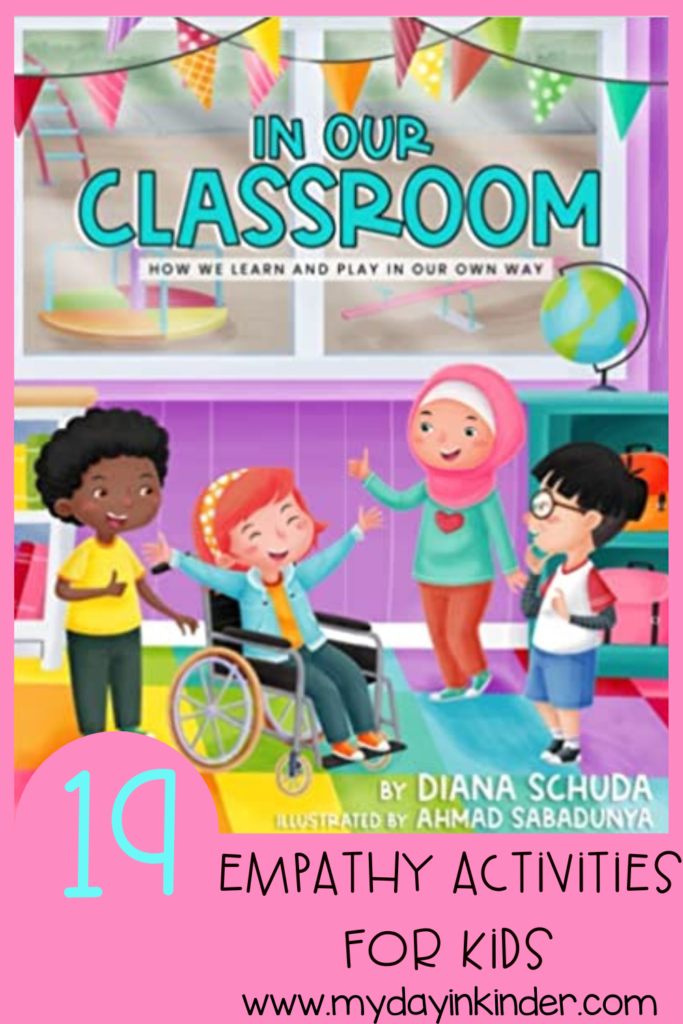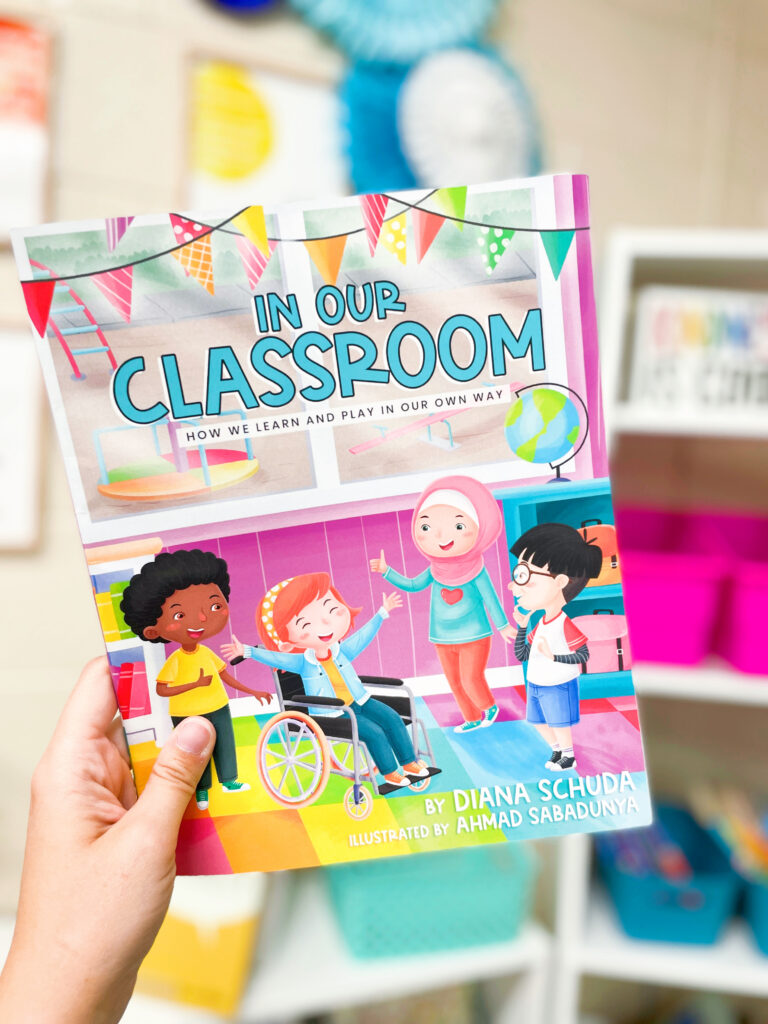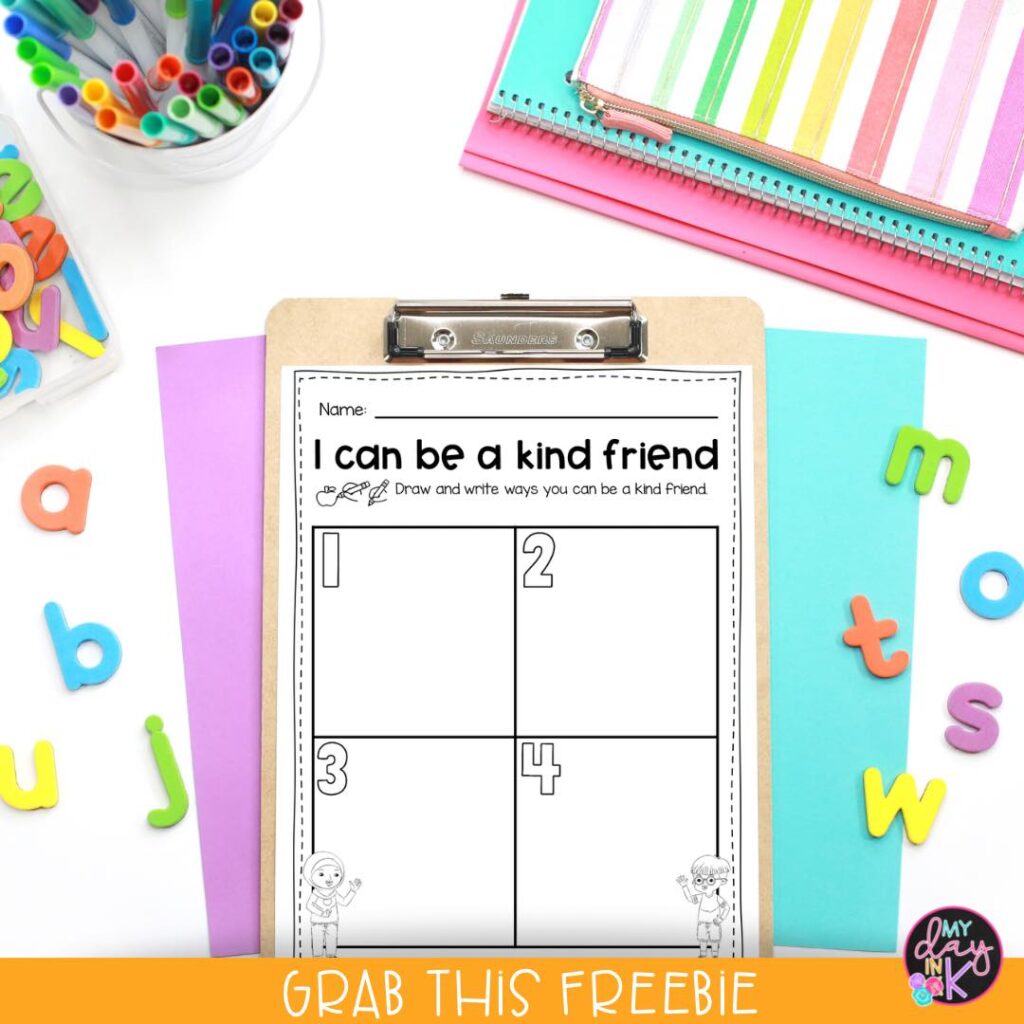19 Easily Engaging Empathy Activities For Kids and In Our Classroom Read Aloud
Empathy. It’s a big word with an even bigger meaning, and our littlest learners (and even our oldest learners) often struggle with figuring out exactly what it is and how to show empathy. When I first walked into the kindergarten classroom, I knew I had to build a positive classroom community. One that was accepting of differences, inclusive, caring, and kind. This all started by bringing in some empathy activities for kids.
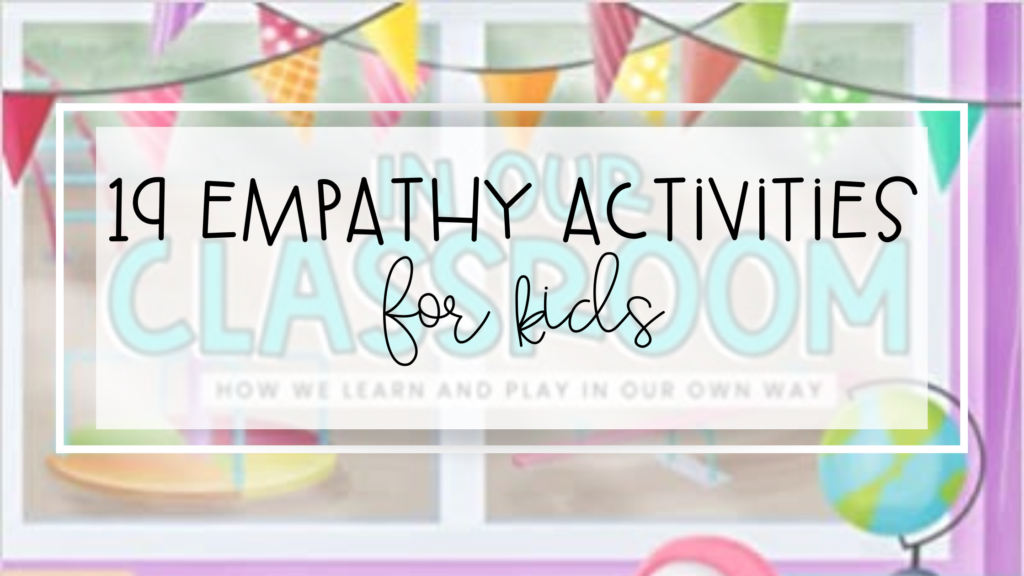
This post contains affiliate links.
What is Empathy?
When building a classroom community and when you go to teach empathy, you have to start with social-emotional learning. This is a big topic and encompasses many aspects like emotions, kindness, body regulation, etc.
But one of the biggest parts of social-emotional learning is teaching empathy. Empathy, by definition, is the ability to understand and share the feelings of others.
Some empathy in the classroom examples:
- If a friend is feeling sad because they spilled water on their painting, their classmates understand this sadness and ask how they can help or if the student wants help.
- When a student is happy to receive a 100% on a spelling test, their friends jump up and down and congratulates them.
- Students are mindful of how certain situations can make others feel like being left out of a game or talking while a friend tries to share.
19 Empathy Activities For Kids
These 19 empathy activities for kids will help you build and nurture a classroom community and give you the opportunity to teach students what empathy really is and how to show it to others. Plus, they’ll be practicing a lot of other social skills too!
1. In Our Classroom, Read Aloud
In Our Classroom by Diana Schuda helps empower students and show them exactly how to be kind, care, include others, celebrate differences, and help each other learn. This inclusive story shows students that they must embrace each other to create a classroom community where everyone feels welcome.
While reading aloud In Our Classroom, you can:
- Discuss what is happening in the story and why their actions show a classroom community.
- Create an anchor chart and discuss ways to show kindness, celebrate differences, etc.
- Have students write about the different subjects mentioned in the book, such as being a kind friend, caring, helping each other learn, etc.
2. How to be a Kind Classmate
When figuring out empathy activities for kindergarten, you want to include ones that students can refer back to or that you can pull out when your class needs a little reminder. Helping students learn how to show kindness towards others is a great start.
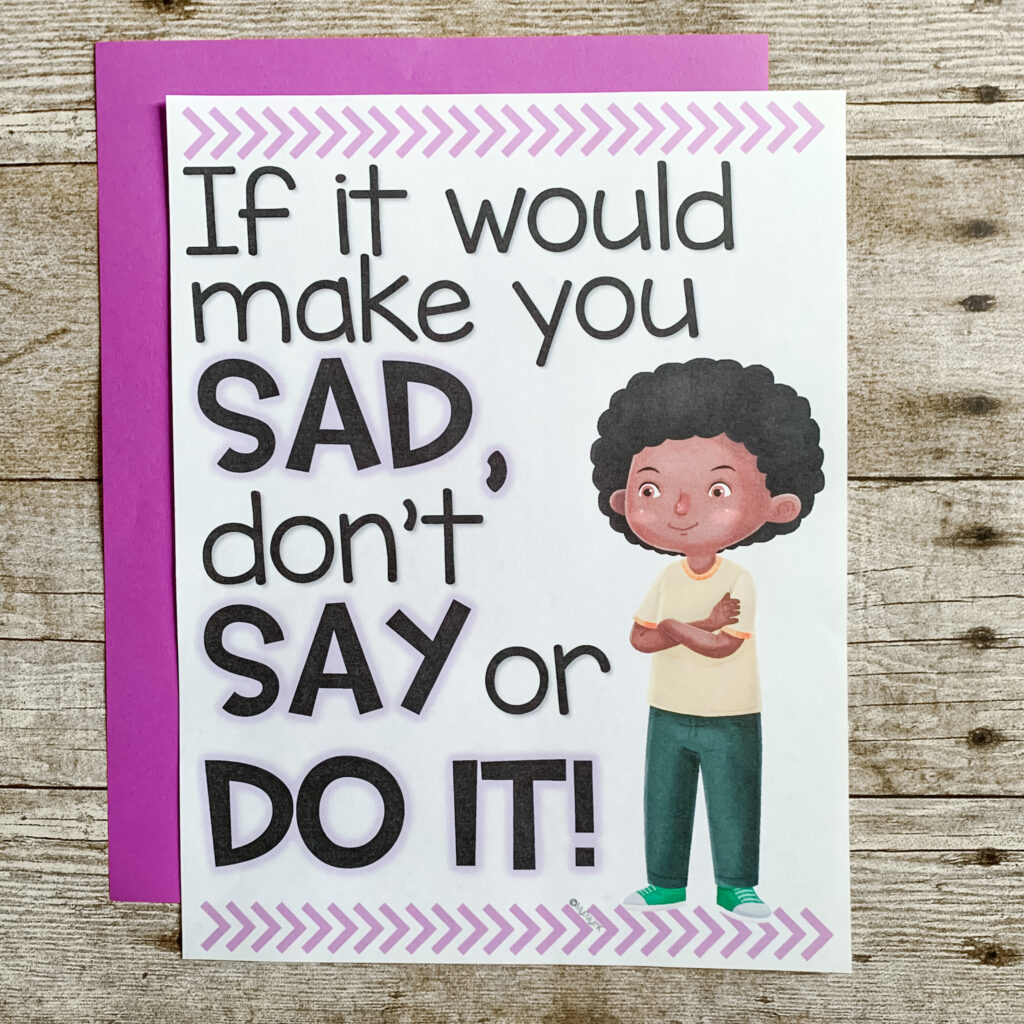
Kindness Activities:
- Students complete a kindness challenge and give them a calendar or list of kind things they need to do each day for peers, teachers, family members, etc.
- Create a random acts of kindness classroom chart, and whenever you see a random act, give students a star.
- Pull out some kindness scenario cards and have students role play each one. Other students should determine if the scenario is kind or unkind.
- Students draw and write what makes them kind classmates.
You can grab the kind friend writing template from My Day In K below!
Use it while reading In Our Classroom, when your students need a little kindness reminder, or when you’re structuring your classroom community.
3. How to Show We Care
There are many ways to teach children how to care and when you are doing so in a kindergarten classroom, it’s important to work with students to discuss what caring looks like inside and outside the classroom.
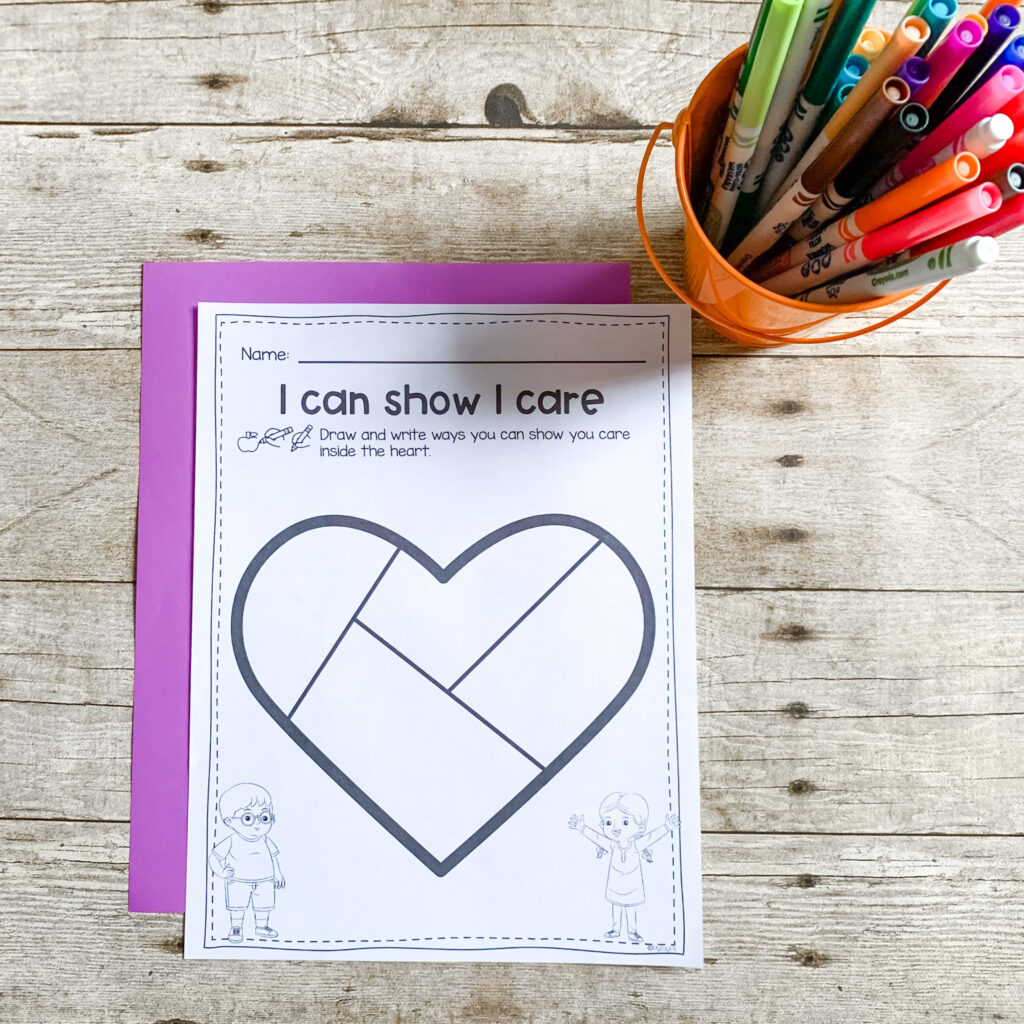
Caring Activities:
- Brainstorm and create a chart showing ways show they care for others inside and outside the classroom.
- Come up with a class signal to show they care when they’re in a morning meeting while reading a book, etc. You may choose a hand over their heart, creating a heart with fingers, or something else.
- Have students draw and write ways they can show they care.
4. Including Others
Including others can sometimes be challenging in kindergarten, not because students want to include everyone but because they often cannot read or do not understand how facial expressions or body language cues come across to others. A student with crossed arms may be feeling nervous but, to others, looks angry or mean.

Inclusion Activities:
- Discuss what scenes in the book show inclusion and which are not.
- Create a chart outlining your daily schedule (arrival, centers, recess, etc.). Together, brainstorm ways to include others during each part of your day.
- Pass out an “I can include my friends” worksheet. Have students circle and X out different scenarios that show inclusions and ones that do not.
5. Celebrating Differences
Student differences are what make a classroom so special. Being surrounded by differences helps children understand that not everyone believes in what they believe, looks like them, learns like them, etc. This is something, as a teacher, we should celebrate!
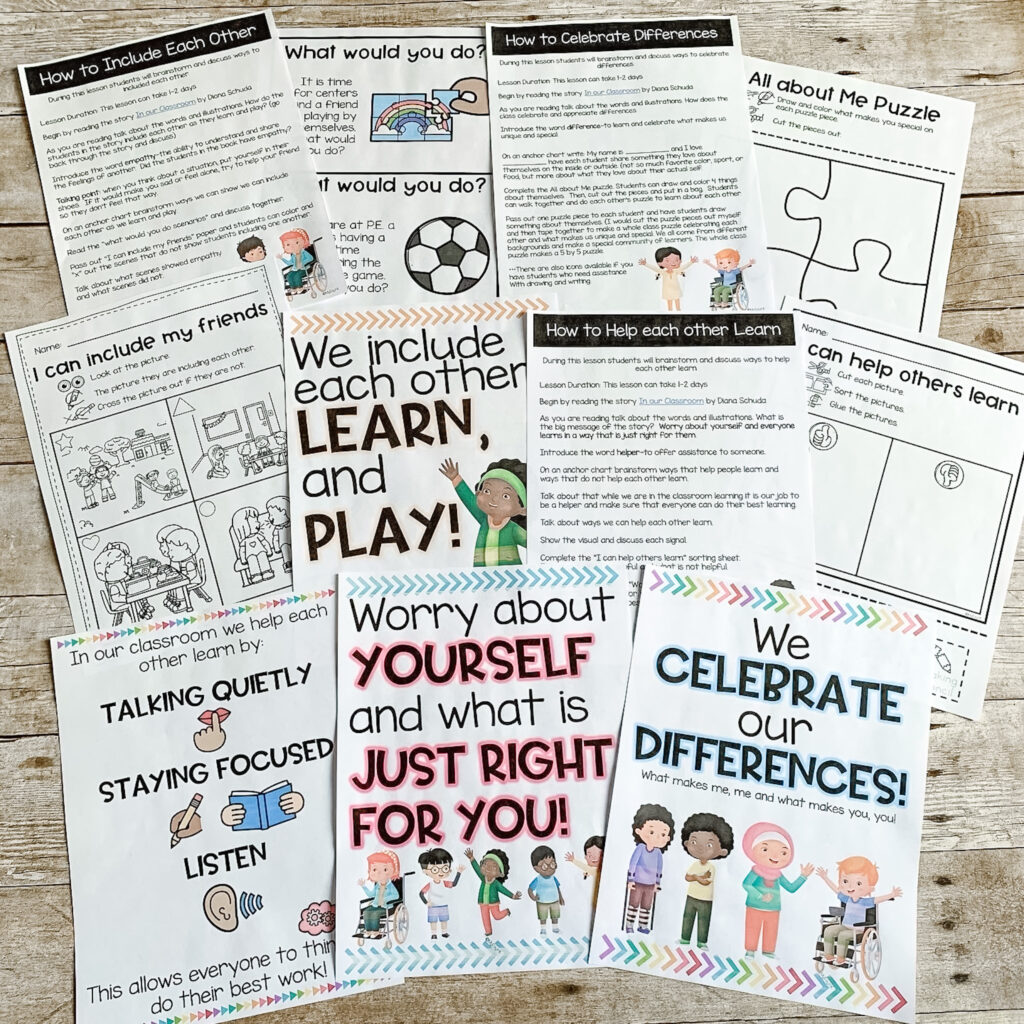
Celebrating Differences Activities:
- Discuss the word differences with your class. Why is it important to celebrate differences? What makes each of us different?
- Have students create an “all about me” puzzle. They can write and draw things about them on the puzzle pieces, cut them out, and their classmates can try and put the puzzle back together. Make it even more fun and make it a mystery. See if students can figure out whose puzzle is whose. After you share, glue the pieces together and create an awesome bulletin board.
- Create an anchor chart full of “self-love.” Have your students fill in the blank of the sentence stem: My name is _______, and I love_______. Give examples, so students understand it is more about their inner and outer traits. You do not want them writing about their favorite sport, tv show, etc.
6. Helping Others Learn
Last but not least, students should learn how to help each other be successful and learn. This is a big part of social-emotional learning because students need to be mindful of their bodies, emotions, and voices when learning and when others are trying to learn.
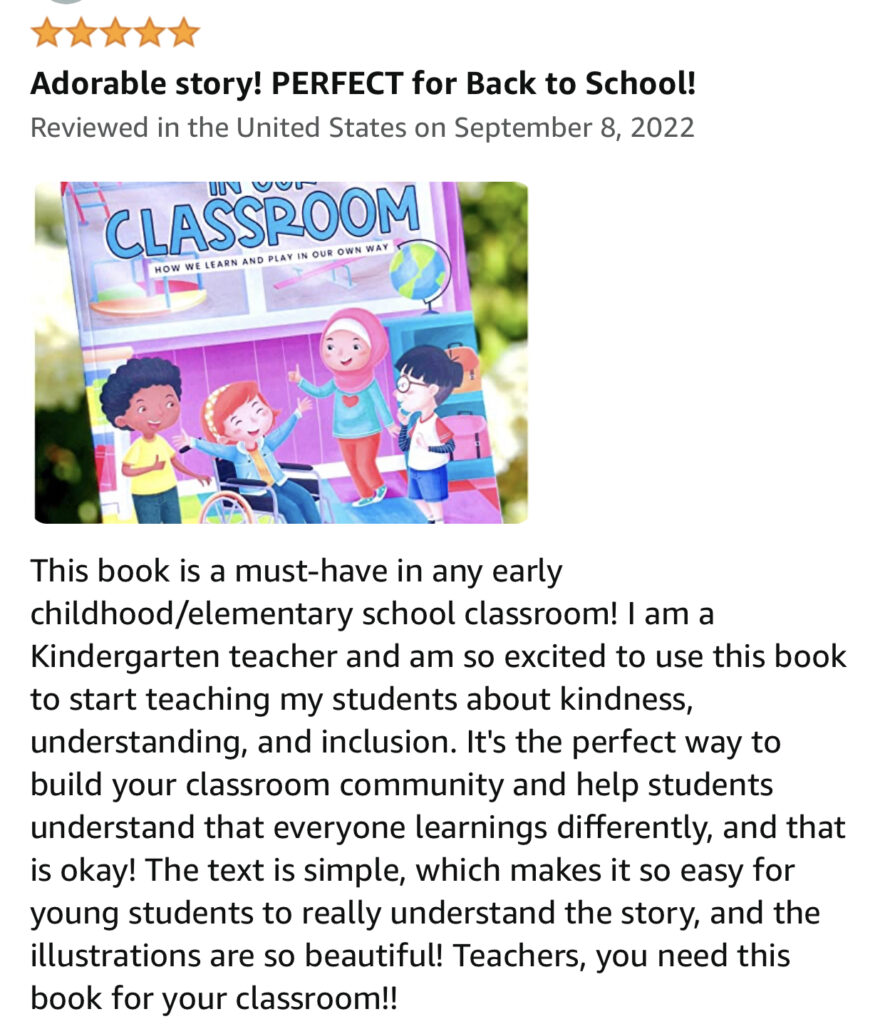
Learning Activities:
- On an anchor chart, brainstorm ways that help people learn and ways that do not help each other learn.
- Complete an “I can help others learn” sorting sheet. Talk about what is helpful and what is not helpful.
- Talk about the poster, “Worry about yourself and what is just right for you” What does that mean, and what does it look like in our classroom?
When reading In Our Classroom there are so many empathy activities for kids that you can complete with students. Leave the empathy worksheets away and get talking, questioning, and hands-on. Students will love to learn about themselves and their classmates!
